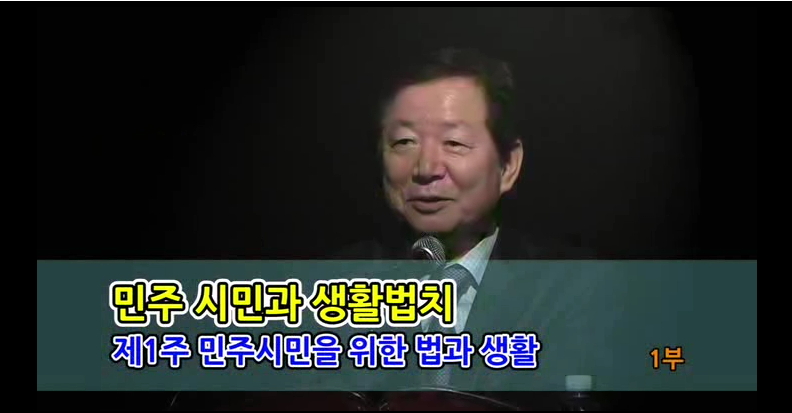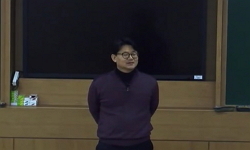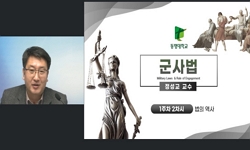This article defines the so-called “Chinese model of the political system,” which has been promoted under the name of establishing a modern governance system since the emergence of the Xi Jinping regime, as a reinforced authoritarian system based ...
http://chineseinput.net/에서 pinyin(병음)방식으로 중국어를 변환할 수 있습니다.
변환된 중국어를 복사하여 사용하시면 됩니다.
- 中文 을 입력하시려면 zhongwen을 입력하시고 space를누르시면됩니다.
- 北京 을 입력하시려면 beijing을 입력하시고 space를 누르시면 됩니다.

시진핑 ‘신시대’ 중국의 정치체제:당국가체제의 ‘진화’와 새로운 패러다임의권위주의체제의 등장 = China’s Political System in Xi Jinping ‘New Era’: The ‘Evolution’ of the Party-State System and the Emergence of a new paradigm authoritarian system
한글로보기부가정보
다국어 초록 (Multilingual Abstract)
A strong authoritarian system in China is a self-superiority of the traditional authority system based on the principle of unified governance of the Communist Party. It can be seen as an authoritarian system based on the principle of “communist party-Minbenzhuyi(民本主义)” rather than democracy and constitutionalism, different from ‘emperor- Minbenzhuyi(民本主义)’ in that it is ruled based on the official organization of the Communist Party, not the emperor. While emphasizing rule based on the rule of law, the Communist Party leads legislation, guarantees law enforcement, supports the judiciary, and takes the lead in defending the law, similar to the ancient kings’ rule. It also emphasizes political participation through the “negotiation” method, but this method is not crucially different from the communication method of “gwan(官)” and “min(民)” in the classic era. However, this is also different from the traditional totalitarian system. A market economic system has been established, and, although at a limited level, a civil society composed of pluralistic interests based on private ownership is growing.
From this point, we can see that the Xi Jinping administration intends to pursue a new evolution of the strong authoritarian system and to continue this as a model of the so-called Chinese-specific political system. This system, this paper argues, is the emergence of another new paradigm authoritarian system because this is fundamentally different from the academic world’s understanding of the authoritarian system that has been regarded as a transitional political system on the premise of a democratic transformation.
This article defines the so-called “Chinese model of the political system,” which has been promoted under the name of establishing a modern governance system since the emergence of the Xi Jinping regime, as a reinforced authoritarian system based on the communist rule. In particular, this paper analyzes the inherent conflicting relations within the main principles of “Chinese” democracy -- the organic combination of the three elements of communist leadership, people’s sovereignty, and the rule of law. This paper also focuses on two specific characteristics of “Chinese” democracy: the implicit conflict between the Communist Party leadership and the principles of people’s sovereignty and the internal conflict between the Communist Party leadership and the rule of law.
A strong authoritarian system in China is a self-superiority of the traditional authority system based on the principle of unified governance of the Communist Party. It can be seen as an authoritarian system based on the principle of “communist party-Minbenzhuyi(民本主义)” rather than democracy and constitutionalism, different from ‘emperor- Minbenzhuyi(民本主义)’ in that it is ruled based on the official organization of the Communist Party, not the emperor. While emphasizing rule based on the rule of law, the Communist Party leads legislation, guarantees law enforcement, supports the judiciary, and takes the lead in defending the law, similar to the ancient kings’ rule. It also emphasizes political participation through the “negotiation” method, but this method is not crucially different from the communication method of “gwan(官)” and “min(民)” in the classic era. However, this is also different from the traditional totalitarian system. A market economic system has been established, and, although at a limited level, a civil society composed of pluralistic interests based on private ownership is growing.
From this point, we can see that the Xi Jinping administration intends to pursue a new evolution of the strong authoritarian system and to continue this as a model of the so-called Chinese-specific political system. This system, this paper argues, is the emergence of another new paradigm authoritarian system because this is fundamentally different from the academic world’s understanding of the authoritarian system that has been regarded as a transitional political system on the premise of a democratic transformation.
국문 초록 (Abstract)
이런 ‘강성’ 권위주의체제는 공산당의 일원적 통치원칙에 기반한 전통적 당국가체제의 자기 우량화 과정이고, 민주주의와 헌정주의 원리가 아닌 ‘공산당-민본주의’ 원리에 기초한 권위주의체제로 볼 수 있다. 이것은 황제가 아닌 공산당이라는 공식적 조직에 기초한 통치라는 점에서 ‘황제-민본주의’와 다르다. 법치에 기초한 통치를 강조하지만 고대 제왕의 법치와 유사하게 공산당이 입법을 영도하고 법 집행을 보장하며 사법을 지지하고 법을 지키는 데 앞장선다. 또한 ‘협상’방식을 통한 정치참여를 강조하고 있지만, 이런 방식은 전통시대의 ‘관’과 ‘민’의 소통 방식과 결정적으로 다르지 않다. 그러나 이것은 시장경제체제에 기초하여 비록 제한된 수준이지만 사적 소유에 기초한 다원적 이해관계로 구성된 시민사회가 성장하고 있다는 점에서 전통적 전체주의체제와도 차이가 있다.
바로 이런 점은 시진핑 정부에 의해 제시된 중국의 정치체제의 발전 방향은 새로운 형식의 강성 권위주의체제의 새로운 진화를 꾀하고 그것을 이른바 중국 특색의 정치체제모델로 발전시켜 가려는 것으로 간주할 수 있다. 그리고 이것은 민주적 전환을 전제로 한 과도적 정치체제로 간주되어 온 그동안의 권위주의체제에 대한 학계의 이해와는 근본적으로 다른 새로운 패러다임의 권위주의체제의 등장으로 간주할 수 있다.
이 글은 “공산당의 영도, 인민주권(人民当家做主), 법치라는 3가지 구성 요소의 유기적 결합”으로 설명되는 ‘중국식’ 민주주의의 주요 원칙에서 출발하여, 공산당 영도와 인민주권원칙 ...
이 글은 “공산당의 영도, 인민주권(人民当家做主), 법치라는 3가지 구성 요소의 유기적 결합”으로 설명되는 ‘중국식’ 민주주의의 주요 원칙에서 출발하여, 공산당 영도와 인민주권원칙 및 공산당 영도와 법치원칙 간에 존재하는 내재적 충돌이라는 두 가지 특징을 분석함으로써, 시진핑 정권 등장 이후 현대적 거버넌스 체제의 구축이라는 이름하에 추진되고 있는 이른바 ‘중국식 정치체제모델’을 공산당의 일원적 통치에 기반한 강화된 권위주의체제로 규정짓고 있다.
이런 ‘강성’ 권위주의체제는 공산당의 일원적 통치원칙에 기반한 전통적 당국가체제의 자기 우량화 과정이고, 민주주의와 헌정주의 원리가 아닌 ‘공산당-민본주의’ 원리에 기초한 권위주의체제로 볼 수 있다. 이것은 황제가 아닌 공산당이라는 공식적 조직에 기초한 통치라는 점에서 ‘황제-민본주의’와 다르다. 법치에 기초한 통치를 강조하지만 고대 제왕의 법치와 유사하게 공산당이 입법을 영도하고 법 집행을 보장하며 사법을 지지하고 법을 지키는 데 앞장선다. 또한 ‘협상’방식을 통한 정치참여를 강조하고 있지만, 이런 방식은 전통시대의 ‘관’과 ‘민’의 소통 방식과 결정적으로 다르지 않다. 그러나 이것은 시장경제체제에 기초하여 비록 제한된 수준이지만 사적 소유에 기초한 다원적 이해관계로 구성된 시민사회가 성장하고 있다는 점에서 전통적 전체주의체제와도 차이가 있다.
바로 이런 점은 시진핑 정부에 의해 제시된 중국의 정치체제의 발전 방향은 새로운 형식의 강성 권위주의체제의 새로운 진화를 꾀하고 그것을 이른바 중국 특색의 정치체제모델로 발전시켜 가려는 것으로 간주할 수 있다. 그리고 이것은 민주적 전환을 전제로 한 과도적 정치체제로 간주되어 온 그동안의 권위주의체제에 대한 학계의 이해와는 근본적으로 다른 새로운 패러다임의 권위주의체제의 등장으로 간주할 수 있다.
참고문헌 (Reference)
1 조지 세바인, "현대 민주주의론의 경향과 쟁점" 문학과 지성사 1994
2 이정남, "중국의 민주주의: 민주관념의 생성과 변천" 아연출판부 2019
3 황태연, "중국의 당정(黨政)관계 변화, 마오쩌둥 시대로의 회귀인가?: 시진핑 시대 당정 기구개혁을 중심으로" 현대중국학회 21 (21): 1-35, 2019
4 이정남, "민주주의와 중국" 아연출판부 2012
5 이정남, "민주주의에 대한 중국의 인식: 비교 역사적 관점을 중심으로" 2012
6 胡锦涛, "高举中国特色社会主义大旗帜,为夺取全面建设小康社会新 胜利而夺门:在中国产党第十七次全国代表大会上的报告"
7 毛益民, "集权体制下的权力制约:理论与实践会议综述" (2) : 2017
8 "筑牢中国长治久安的制度根基——十九届四中全会《决定》诞生记"
9 杨雪冬, "理解改革开放以来中国政治变化的三重维度" (5) : 2018
10 中共中央印发, "深化党和国家机构改革方案"
1 조지 세바인, "현대 민주주의론의 경향과 쟁점" 문학과 지성사 1994
2 이정남, "중국의 민주주의: 민주관념의 생성과 변천" 아연출판부 2019
3 황태연, "중국의 당정(黨政)관계 변화, 마오쩌둥 시대로의 회귀인가?: 시진핑 시대 당정 기구개혁을 중심으로" 현대중국학회 21 (21): 1-35, 2019
4 이정남, "민주주의와 중국" 아연출판부 2012
5 이정남, "민주주의에 대한 중국의 인식: 비교 역사적 관점을 중심으로" 2012
6 胡锦涛, "高举中国特色社会主义大旗帜,为夺取全面建设小康社会新 胜利而夺门:在中国产党第十七次全国代表大会上的报告"
7 毛益民, "集权体制下的权力制约:理论与实践会议综述" (2) : 2017
8 "筑牢中国长治久安的制度根基——十九届四中全会《决定》诞生记"
9 杨雪冬, "理解改革开放以来中国政治变化的三重维度" (5) : 2018
10 中共中央印发, "深化党和国家机构改革方案"
11 习近平, "深刻认识深化党和国家机构改革的重大意义——党的十九届 三中全会第二次全体会议上的讲话(节选)" (5) : 2018
12 蔡定剑, "民主是一种现代生活" 社会科学文献出版社 2011
13 毛泽东, "毛泽东选集 (第二卷)" 人民出版社 1991
14 萧功秦, "新权威主义" (3) : 1989
15 陈家喜, "新时代执政党干部选任制度的新变化" (2) : 2019
16 王宗礼, "新中国70年中国特色政治发展道路及其理论超越" (5) : 2019
17 熊玠, "把协商民主作为国家战略"
18 虞崇胜, "我国国家治理权力架构当前存在的问题与对策" (2) : 2019
19 殷肃虎, "当代中国宪政之研究" (11) : 2012
20 何增科, "建构现代国家廉政制度体系: 中国的反腐败与权力监督" 2013
21 "守正不移,与时俱进维护中美关系的正确方向——王毅国务委员在中 美智库媒体论坛上的致辞"
22 习近平, "在庆祝中国人民政治协商会议成立65周年大会上的讲话"
23 陈剑, "协商民主与中国政治发展" 理论动态
24 习近平, "加强党对全面依法治国的领导"
25 习近平, "决胜全面建成小康社会 夺取新时代中国特色社会主义伟大胜 利——在中国共产党第十九次全国代表大会上的报告"
26 王振民, "关于民主与宪政关系的再思考" (5) : 2009
27 王长江, "关于权力约束机制的几点思考" (1) : 2016
28 萧功秦, "关于新权威主义体制与国家治理问题的若干思考" (3) : 2014
29 柯华庆, "党规是法治中国的核心"
30 强世功, "党章与宪法: 多元一体法治共和国的建构" 2015
31 赵刚印, "党政军民学, 东西南北中,党是领导一切的”, 55年前毛泽东最 初是怎么说的?"
32 柯华庆, "党导民主制:正当性与价值"
33 萧功秦, "从新权威主义看中国改革40年" 2019
34 闾小波, "从守成到能动:中国共产党与民本主义的转向" (1) : 2018
35 习近平, "习近平在庆祝全国人民代表大会成立六十周年大会上的讲话"
36 鄢一龙, "中美政治体制比较:“七权分工”vs.“三权分立”" (3) : 2020
37 俞可平, "中国的政治发展: 中美学者的视角" 社会科 学文献出版社 2013
38 王长江, "中国的政治发展" 社会科学文献出版社 2013
39 俞可平, "中国的善治之路: 中美学者的视角" 2013
40 景跃进, "中国特色的权力制约之路-关于权力制约的两种研究策略之辨 析" (4) : 2017
41 陈明明, "中国政治制度的价值结构: 冲突与调适" (2) : 2008
42 "中国共产党第十九届中央委员会第四次全体会议公报"
43 王长江, "中国共产党执政七十年党建经验再思考" (4) : 2019
44 郑永年, "中国体制改革向何处去?"
45 "中共中央关于全面深化改革若干重大问题的决定.(2013年11月12日中 国共产党第十八届中央委员会第三次全体会议通过)"
46 Ringen, Stein, "The perfect Dictatorship-China in the 21st China" HKU Pres 2016
47 Zheng, Yonghian, "The Chinese Communist Party as Organizational Emperor: Culture, Reproduction and Transformation" Routledge 2010
48 Heurlin, Christopher, "Responsive Authoritarianism in China" Cambridge University Press 2016
49 Tang, Wenfang, "Populist Authoritarianism: Chinese Political Culture and Regime Sustainability" Oxford University Press 2016
50 Diamond, Larry, "Demoraccy in Developing Countries(Vol.2)" Lynne Rienner 1988
51 Nathan, Andrew J., "China’s Changing Political Landscape" The Brookings Institution 2008
52 이정남, "5.4운동 100년을 통해서 본 중국 정치제제의 변화: 당국가체제의 ‘승급(昇級)’인가? 민주주의체제로의 전환인가?" 현대중국학회 21 (21): 83-112, 2019
동일학술지(권/호) 다른 논문
-
역사성과 현재성의 관점에서 살펴본 러시아 고전 오페라의 현대 연출 미학과 경향:차이콥스키의 오페라 "예브게니 오네긴"을 중심으로
- 한양대학교 아태지역연구센터
- 박선영
- 2020
- KCI등재
-
- 한양대학교 아태지역연구센터
- 민귀식
- 2020
- KCI등재
-
코로나 팬데믹 시대, 국제질서의 변화와러시아의 외교전략: 중러․미러 관계를 중심으로
- 한양대학교 아태지역연구센터
- 최재덕
- 2020
- KCI등재
-
러시아 안보․국방 분야의 인공지능 기술 도입과개발 현황: 분석과 한계
- 한양대학교 아태지역연구센터
- 이수훈
- 2020
- KCI등재
분석정보
인용정보 인용지수 설명보기
학술지 이력
| 연월일 | 이력구분 | 이력상세 | 등재구분 |
|---|---|---|---|
| 2026 | 평가예정 | 재인증평가 신청대상 (재인증) | |
| 2020-01-01 | 평가 | 등재학술지 유지 (재인증) |  |
| 2017-01-01 | 평가 | 등재학술지 유지 (계속평가) |  |
| 2013-01-01 | 평가 | 등재 1차 FAIL (등재유지) |  |
| 2010-01-01 | 평가 | 등재학술지 유지 (등재유지) |  |
| 2008-01-01 | 평가 | 등재학술지 유지 (등재유지) |  |
| 2005-01-01 | 평가 | 등재학술지 선정 (등재후보2차) |  |
| 2004-01-01 | 평가 | 등재후보 1차 PASS (등재후보1차) |  |
| 2003-01-01 | 평가 | 등재후보학술지 유지 (등재후보1차) |  |
| 2002-01-01 | 평가 | 등재후보학술지 유지 (등재후보1차) |  |
| 2000-07-01 | 평가 | 등재후보학술지 선정 (신규평가) |  |
학술지 인용정보
| 기준연도 | WOS-KCI 통합IF(2년) | KCIF(2년) | KCIF(3년) |
|---|---|---|---|
| 2016 | 0.51 | 0.51 | 0.44 |
| KCIF(4년) | KCIF(5년) | 중심성지수(3년) | 즉시성지수 |
| 0.39 | 0.43 | 0.604 | 0.34 |





 KCI
KCI DBpia
DBpia







